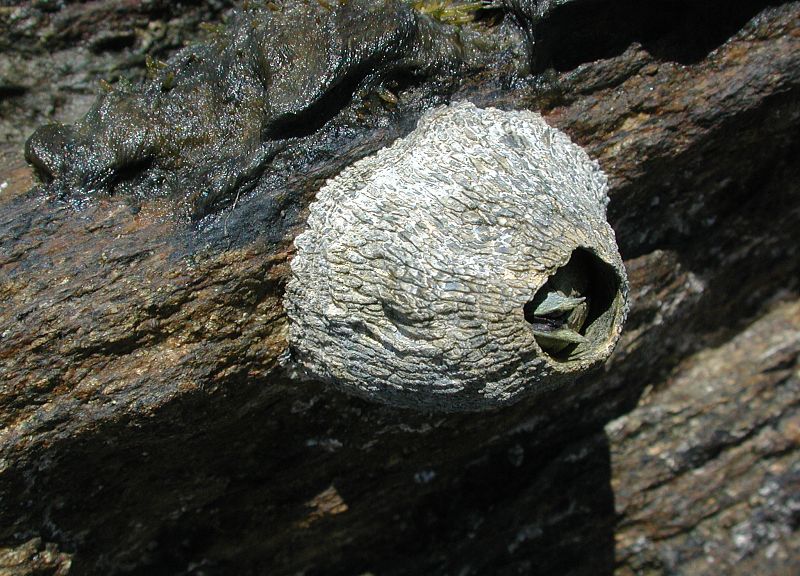-
 CTP
CTP
-
 CP symmetry violation
CP symmetry violation
-
 Connex
Connex
-
 ENVISAT
ENVISAT
-
 Rhizome
Rhizome
-
 Greenstick fracture
Greenstick fracture
-
 Achalasia
Achalasia
-
 Spinel structure
Spinel structure
-
 Depletion
Depletion
-
 ppm
ppm
-
 Endocrine
Endocrine
-
 Revocation
Revocation
-
 Annealed copper
Annealed copper
-
 Deciduous
Deciduous
-
 Glycolysis
Glycolysis
-
 Fog
Fog
-
 Svalbard Global Seed Vault
Svalbard Global Seed Vault
-
 M78
M78
-
 Deficiency
Deficiency
-
 Gait
Gait
-
 Rosemary
Rosemary
-
 HiPER
HiPER
-
 Geodesics
Geodesics
-
 M63
M63
-
 Chemoreceptor
Chemoreceptor
-
 Sea-green
Sea-green
-
 Analeptic
Analeptic
-
 Belemnites
Belemnites
-
 Hybrid
Hybrid
-
 Wolf, Max
Wolf, Max
Barnacle
Barnacles belong to the infraclass Cirripedia. There are three orders of Cirripedia: Thoracica, which includes Balanidae, Acrothoracica and Rhizocephala.
Cirripedia are marine organisms with no compound eyes and antennae. The thorax has six pairs of biramous appendages, cirri, used for respiration and to capture food particles. These six pairs of legs transformed into cirri, form an oval-shaped structure with powerful muscles and brush bristles used to create a food current and direct nutritious particles towards the mouth. The body is housed inside plates that form a low cone, with an opening made mobile by the small plates inserted inside it: the terga and scuta.
Organisms classified as Acrothoracica permanently live in holes formed in the coral. Rhizocephala are parasites of decapod crustaceans and are not found on the beach: the two groups cannot therefore be confused in France.
Barnacle facts
- Name: barnacle or Cirripedia
- Scientific name: Semibalanus balanoides
- Family: Balanidae
- Class and subclass: Crustaceae Cirripededia
- Range: beaches, all coasts
- Lifestyle: attached to rocks, can tolerate temporary desiccation. The chitinous plates open and close as needed.
- Diet: microphage that filters water for food, it captures its prey using its cirri (hence its name), filter feeder.
- Reproduction:reproduction by internal fertilisation, hermaphroditic animal, oviparous, temporarily floating larvae.

Open barnacle. © C.König
Reproduction and use prohibited

Closed barnacle. When water covers this crustacean, it closes as soon as it is immersed and remains closed for the entire duration of the tide. © C.König
Reproduction and use prohibited
Further information
This is a boreoarctic species commonly found in the intertidal zone. It is hermaphroditic, but its self-fertilisation is considered to be impossible. The fertilisation period takes place (more or less) in late October and fertilised barnacles incubate their eggs in their palleal cavity until eggs are laid in the spring. Barnacles have several plankton stages during which the different nauplius larvae are mobile. When it reaches the adult stage, the barnacle attaches itself to a rock or shell. When it fixes itself to a rock or shell, its body reverses and the animal's ventral side is on the top, which encourages the formation of plates.
At low tide, Thoracica can breathe through a micropyle which maintains contact between the air and the water contained in the shell. If too much evaporation occurs, it may completely close and rely upon anaerobic breathing for a while.
There are different ranges of the species depending on the littoral zones. In France, large species such as Balanus perforatus are found in covered areas under rocks exposed to the wind, where they protect themselves from the force of waves, while smaller species such as Chthamalus stellatus and Semibalanus balanoidestake advantage of the rocks and are able to withstand more exposed places, they must also remain immersed for longer times (permeability of the cuticle, size, capacity to retain water, resistance to desiccation, all sorts of metabolic problems, therefore...). These parameters determine the distribution of barnacles along the coast.
Bibliography
- C.König: personal notes
- P.-P. Grassé: Zoology, Masson
- P. Hayward: Guide to the sea's coasts. Delachaux and Niestlé
 Australian barnacle. © Fritz Geller-Grimm, Flickr CC by sa 2.5
Australian barnacle. © Fritz Geller-Grimm, Flickr CC by sa 2.5
Latest
Fill out my online form.



